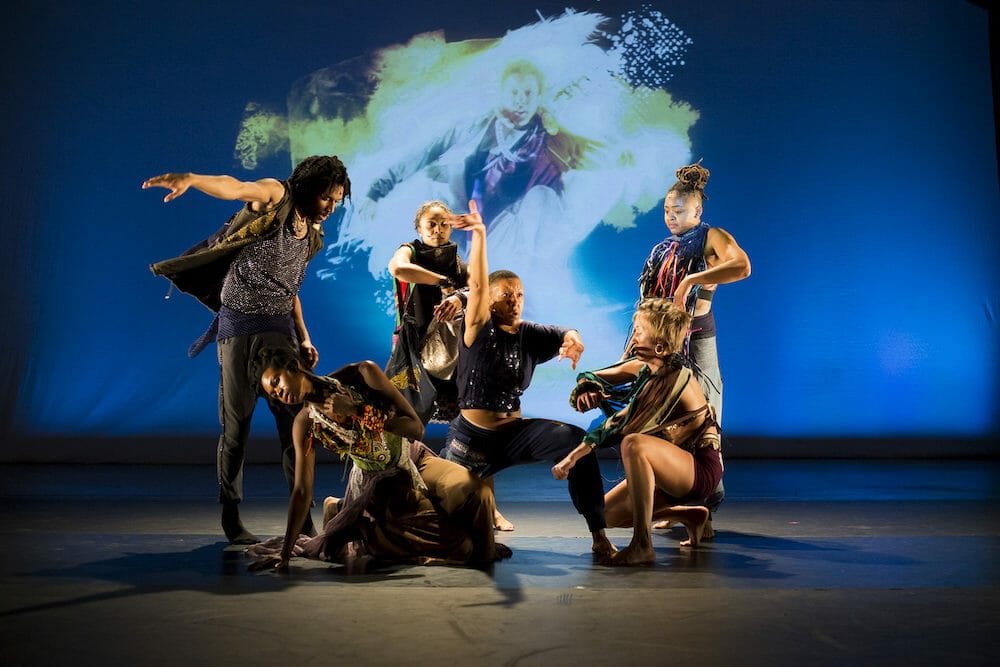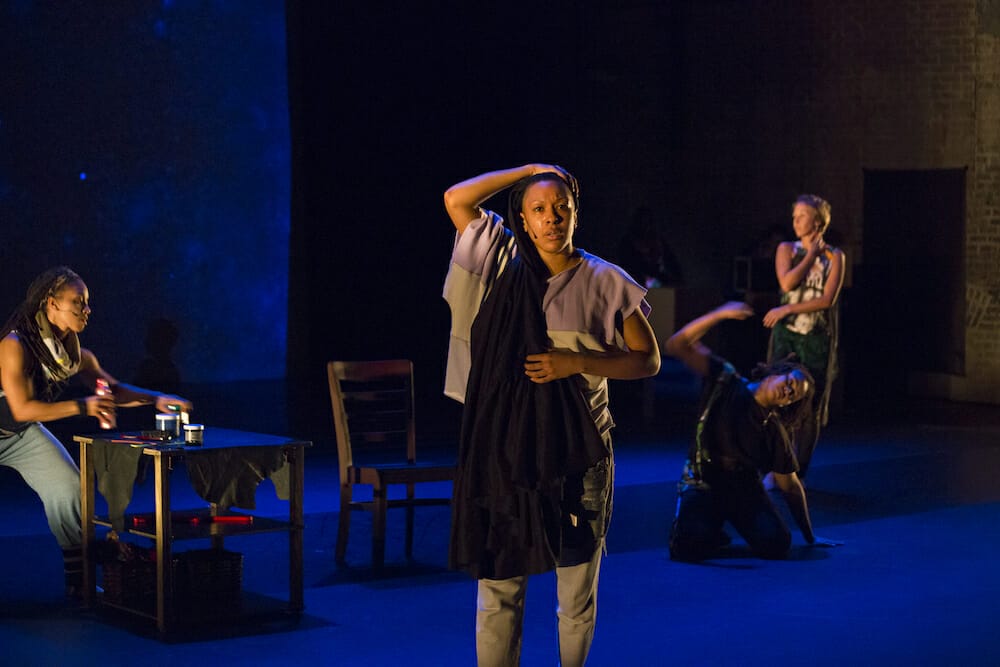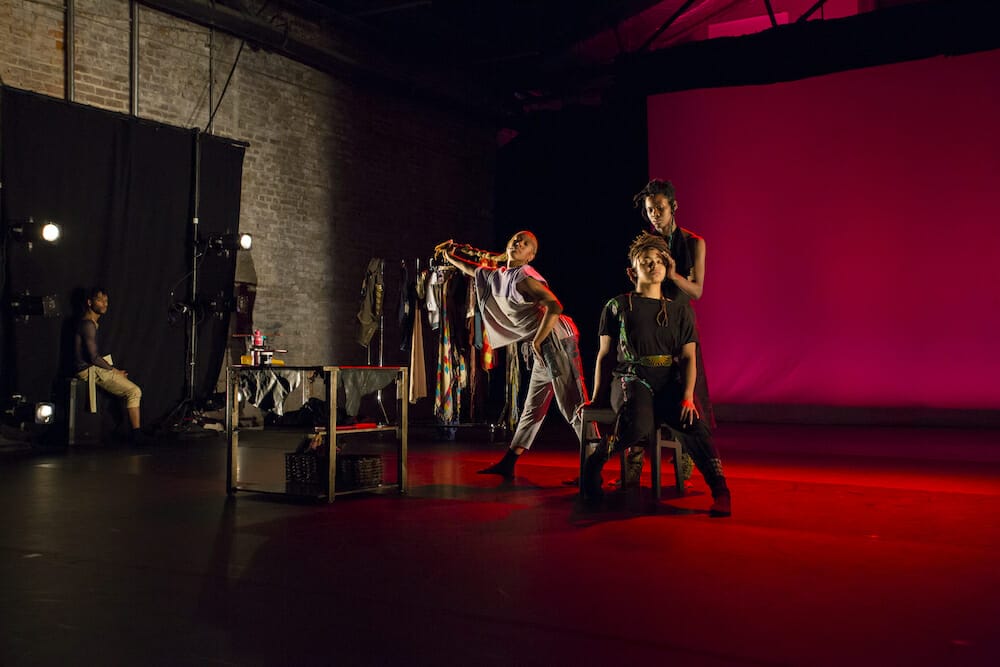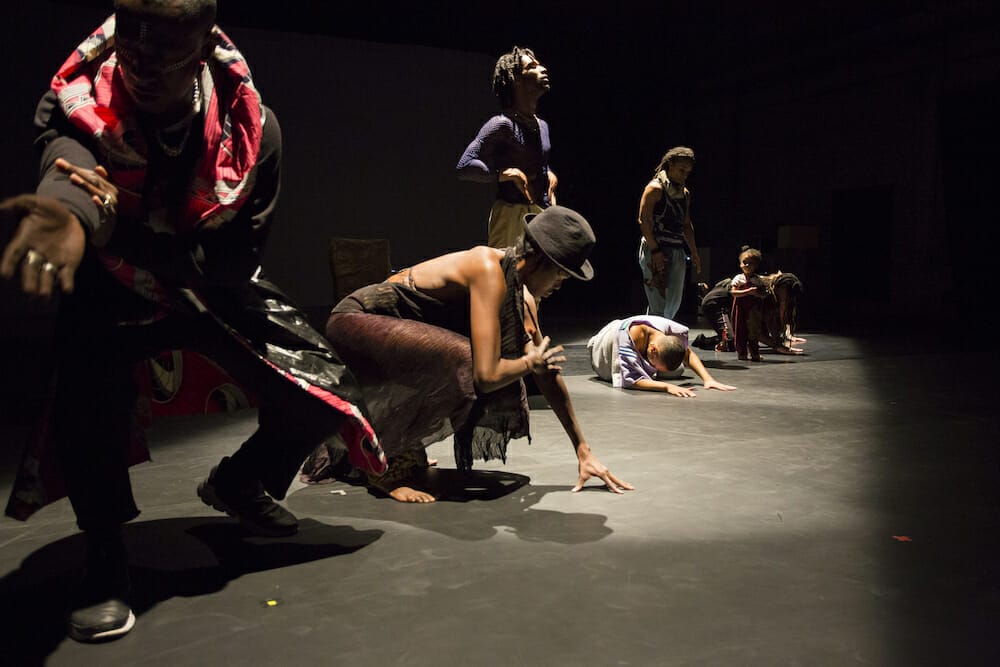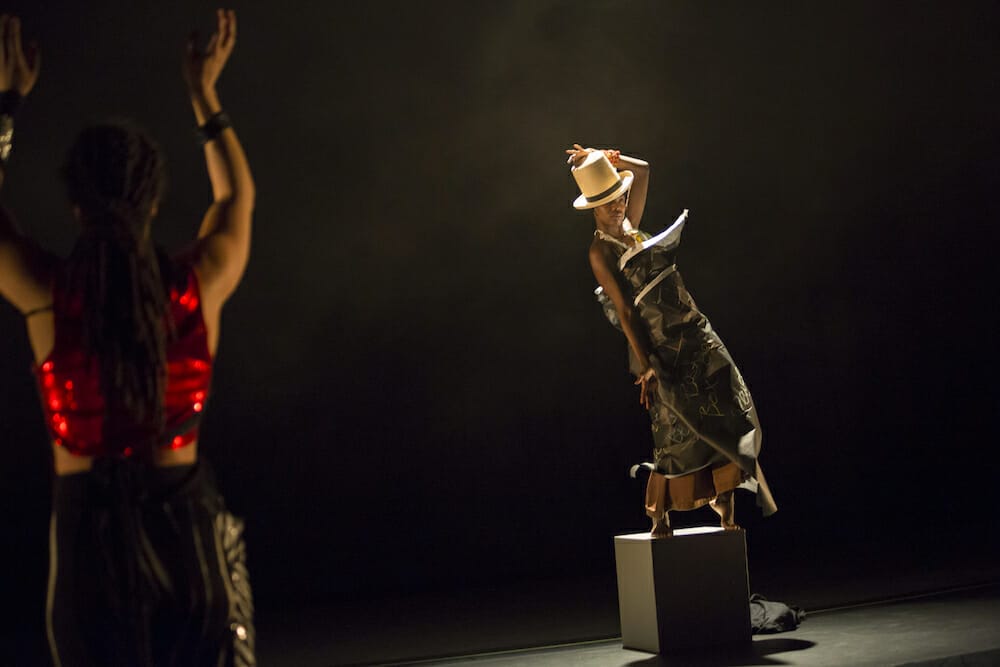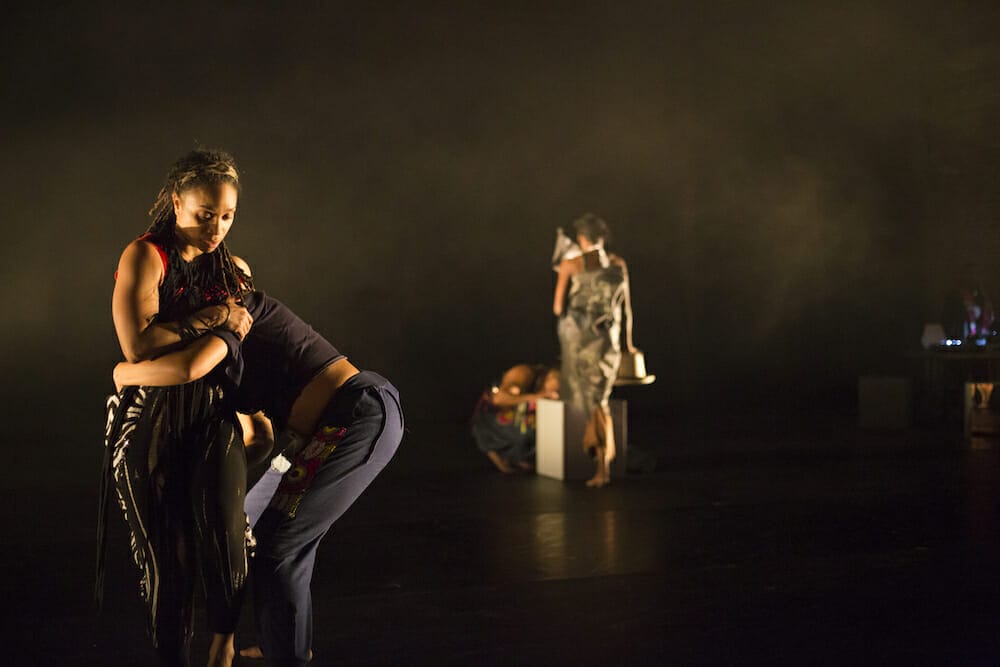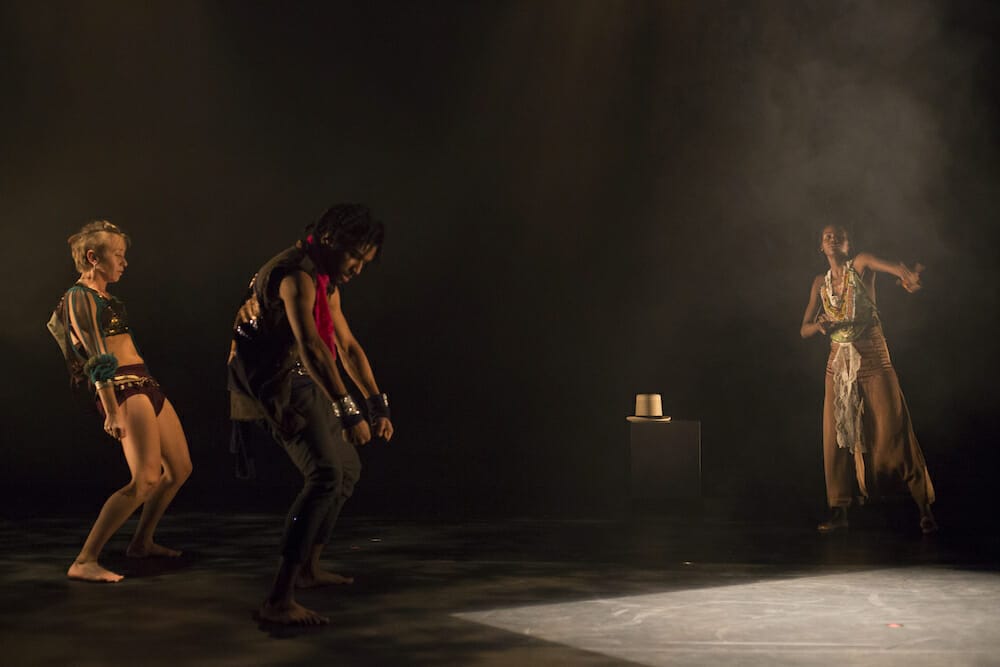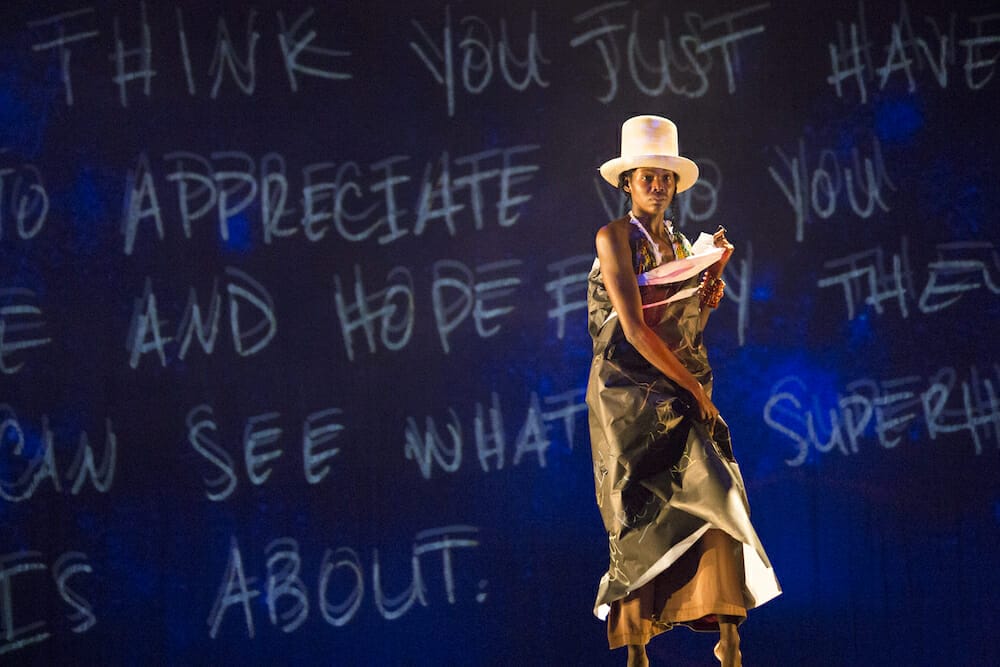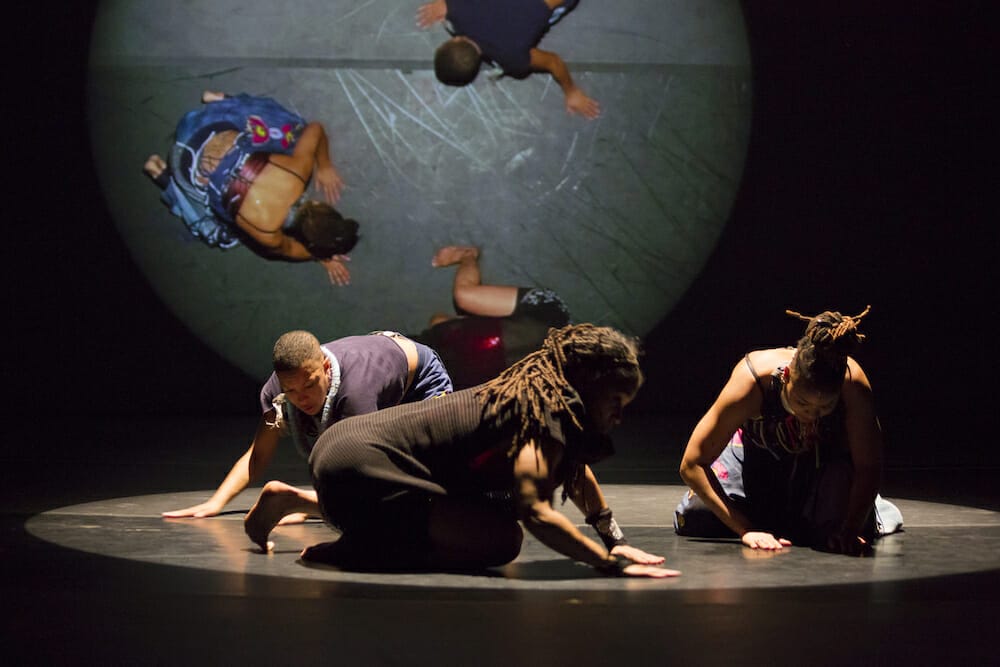“If you’re looking for a journey into the future, jump aboard this train...You don’t have to leave the same way that you came,”
This is a dancer preaching to the audience, house lights blurring the line of stage and audience. We are on this journey together, and this was one of many call and responses vocalized throughout the night.
We find ourselves in “The Kitchen,” a term projected on the screen behind the 6 dancers clad in colorful flowing clothing designed by DeeDee Gomes. “The Kitchen” refers to a “patch of hair at the nape of the neck most resistant to getting straight.” Another dancer chimes in that it’s also the place where you can get some good cooking from all your family members…
Family matters occur in the kitchen, and we are all a big family in this kitchen. Our family matters run deep into our ancestral histories, and require our attention and energy to move through them together.
A dancer traverses across the stage to where a pool of light illuminates a small table, a chair, and various combs and hair products on the table. She maneuvers her way around the set, placing and replacing the items on the table, trying to figure out how they go. Then, she deliberately sets each item in a very specific spot on the table, as if she’s known how to prepare to do someone’s hair all along.
Another dancer enters the set with a scarf wrapped around her midriff, and something on her back. As she walks around the square of light, we see a small child on her back! This is the youngest performer this dance writer has seen on the professional stage since the Nutcracker! The dancer then uses the same scarf that held the child to wrap her hair tightly on her head. Perhaps we can interpret this as hair having a similar importance to a person as a child--precious and nurtured.
A tableau of the female performers are around the hair preparation set, each person working on another’s hair while also getting their own hair worked on. We hear about different experiences about what black girls go through to straighten, perm, relax, and comb their hair.
Halfway through the show, we are asked to get up from our seats and join the dancers on stage. We are guided through a series of motions on stage, almost as if we are participating in a movement workshop. The dancers ask us to move in various ways to help process what we had just experienced. They explain that we have to find a way to move through it.
We find ourselves dancing to thick dance beats and illuminated by colorful lights as the dancers shape us into a large circle on the entire stage. A dancer then moves into the center, seamlessly executing complex technical steps blended with gestural motions. She finishes her solo and we make our way back to our seats.
Amidst all the motion on stage, the two dancers who are writing pick up their drawing, and walk over to the soloist who is now standing atop a podium. Wearing a beige top-hat, they wrap her in the piece of paper, giving her a new outfit. She then starts to rip the paper dress off, as if shedding her outer layer with much effort.
Amidst all the motion on stage, the two dancers pick up their drawing, and walk over to the soloist who is now standing atop a podium. Wearing a beige top-hat, they wrap her in the piece of paper, giving her a new outfit. She then starts to rip the paper dress off, as if shedding her outer layer with much effort.
Meanwhile and throughout, projections akin to static on a television set with vague images of faces and bodies as if from a memory, and a brightly colored scrim backdrop the piece. At some points the dancers use a smart phone to video each other, which was then projected in a live feed on the screen, providing a new, shifted perspective of the dance. Later, we see a bird’s eye view projection of what’s happening on stage in front of us.
Wash, disinfect, rinse, lather, repeat—we find ourselves in a place where we have deconstructed constructs that have worked against liberation and peace for so long.
In this writer’s view this work requires your openness, attention, and willingness to move forward. We may be uncomfortable. We may feel this discomfort is our norm. But we will work through it together.
HIGHLY RECOMMENDED
Dancers:
Aminata Mariama Balde Top; Chanon Judson; Courtney J. Cook; Ross Daniel; Samantha Speis; Stephanie Más; Tendayi Kuumba;
Choreographers: Chanon Judson and Samantha Speis in collaboration with the company
Stage Director: Raelle Myrick-Hodges
Dramaturg: Jawole Willa Jo Zollar
Lighting Designer: Xavier Pierce
Costume Designer: DeeDee Gomes
Projections Designer: Nicholas Hussong
Sound Designer: Everett Asis Saunders
Music Composer: The Illustrious Blacks (Manchildblack and Monstah Black)
For more about Urban Bush Women, visit Urban Bush Women website.
For more about the Dance Center at Columbia College Chicago, visit the Dance Center website.
Photos: James Morgan Owens.
Learn more about dance by seeing dance through dancers eyes in the Picture This Post series, “Choreographers’ Eyes - Dancers Explain Dance”. Watch this video preview of the story here—


